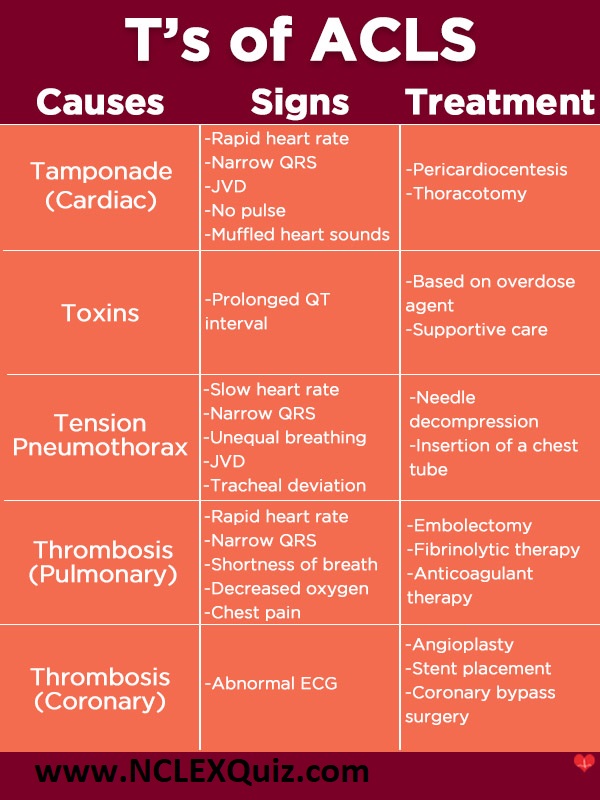What are the “T’s”?

Tamponade (Cardiac)
Cardiac tamponade is a buildup of blood or fluid in the pericardial space, causing pressure on the heart, preventing ventricles from filling properly. Causes of tamponade include chest trauma, pericarditis and myocardial rupture.
Toxins
The ingestion of toxins is one of the most common causes of cardiac arrest, and occurs when an individual either intentionally or unintentionally overdoses on some type of medication, street drug or chemical exposure. One commonly seen sign of cardiac arrest due to toxins is a prolonged QT interval.
Tension Pneumothorax
Tension pneumothorax develops when there is a buildup of air in the pleural cavity, but there is no place for air to exit. The buildup of air causes a shift in mediastinum and venous return to the heart is blocked and can result in cardiac arrest. Some common causes of tension pneumothorax are chest trauma, iatrogenic and mechanical ventilation. Signs include unequal breathing sounds, JVD, ventilation issues and tracheal deviation.
Thrombosis (Pulmonary)
Thrombosis, or a pulmonary embolism, typically develops after a blood clot in another area of the body, and can lead to cardiac arrest in some instances. A pulmonary embolism is a blockage of the lung’s main artery, and is caused by blood clots.
Thrombosis (Coronary)
Coronary thrombosis is a blockage within the coronary artery or arteries due to clotted blood in the vessel. This prevents blood from properly flowing to the heart, and can cause cardiac arrest depending on the intensity and location of the blockage. Coronary thrombosis is caused by blood clots and myocardial infarction.